![]() susan cropper photographed at loop by simon brown
susan cropper photographed at loop by simon brown
In my opinion Loop are an essential part of the knitting community, having helped shape the current climate of handcraft in the UK. Loop's founder, Susan Cropper is a gracious, generous, open person and I am lucky to have spent time talking and communicating with her. The interview that follows is something I really enjoyed. Susan has given me so much insight into the person behind the brand and I can say that in person she is equally as warm and welcoming - I admire her greatly for her kind spirit as well as her enormous skills, knowledge and achievement.
What are your first significant memories of fabric, yarn or knitting?Oooh, that’s an easy one. My beautiful mom, Joan, did weaving when I was a child. We had this small NYC apartment but somehow, in the living room, she had this great big loom. She dabbled with dyeing her own yarn and she’d do it the bathroom. So for a time there were skeins always hanging over the shower rail drying out in these crazy colours. That the dyes were made from things like beetles, beetroot, onions always fascinated me.
My mom was also an interior designer and since I was very small she would drag me around the D&D building in NYC (Decorative and Design Building), which is where all the furniture and textile companies had their showrooms. We’d go around and gather swatches of fabric, paint chips, small photos of design classics which would wind up on ‘mood boards’ in progress that would be lying around the apartment. On weekends we’d go with my brother to the art museums too. So I was introduced to design and textiles from a very early age and I expect the passion for it seeped into me by osmosis.
![]() tait and style at loop
tait and style at loop
I studied Textile Design at the Fashion Institute of Technology in NYC before switching to Graphic Design at the School of Visual Arts. My work before opening Loop was working as a designer and art director mostly on lifestyle and home magazines in London while raising my three children. I used to do a lot of art when I was younger and have always been drawn to textiles and design. I love to go to design fairs as well as vintage fairs and flea markets wherever I am. It is colour and texture that has always inspired me.
Do you feel comfort when you knit, is it meditative, does it make you travel back in time or switch off?I feel total comfort from it. I feel my blood get going when I am looking at yarns and ranges of colours and textures but the actual process of knitting (and I am a pretty slow knitter compared to most people I know!) is so soothing to me. Just today, it is a rainy Sunday afternoon and I am watching a DVD of ‘La Vie En Rose’ that Sonia, my daughter, lent to me and knitting a series of flowers. I’m in heaven.
![]() yarns at loop
yarns at loopI have balls of yarn that I arrange in clusters around my apartment just because they make me happy see them. Little bundles of Habu Japanese yarn and wound up skeins in gorgeous hues. I also have an awful lot of vintage buttons and velvet flowers and haberdashery scattered about. There are jugs of knitting needles on hand too.
On my bed and in the living room are a lot of knit blankets and pillows and quirky toys.
![]() donna wilson's knitted creatures at loop
donna wilson's knitted creatures at loop
I have a few textile treasures. I love my little wire bird that is so simple and charming. It is shaped wire with threads strung through it.
![]() wire bird treasure and vintage buttons
wire bird treasure and vintage buttons
Sophie Digard’s scarves and necklaces are exquisite. The workmanship of the crochet using this incredibly thin merino wool combined with her colour palette makes them hard to resist. We have a small selection of them at Loop and it takes all my will power not to scoop them all up and take them home. I have treated myself to a small scarf and one of her crochet necklaces.
![]() Sohie Digard necklace
Sohie Digard necklace
Also, my ‘second mom’, Joy, bought me a beautiful throw when we had a girls’ trip in NYC for a few days that is knit and lightly felted and is in the most beautiful colours. Warm mauve, browns and mustard yellow. It’s on my bed and covers me each night. Another treasure is a handbag that I got years ago as a birthday present. It’s what inspires me in textiles- layering. It has a fabric that reminds me of old tapestries. On top of that are randomly stitched blossoms and leaves.
![]() some of Susan's textile treasures
some of Susan's textile treasures
The last thing isn’t really mine - it’s a doll I made for Sonia in one of Julie Arkell’s workshops and I just love it. I made it for her when she was traveling around South America for a year and I stitched ‘happy travels’ onto the pinny. I held onto it until she returned and a lot of love was put into each stitch as I missed her so much. It’s up with her in Manchester now.
Just holding or looking at these things fills me with pleasure. Somehow colours and textures evoke an emotional response in me.
![]() What do you (emotionally) get from Loop? Is it what you expected?
What do you (emotionally) get from Loop? Is it what you expected?Creating
Loop and building it up and seeing it grow has been enormously important to me in a very emotional way. I put my heart and soul into it and the joy I get from sourcing new yarn and meeting talented people who make incredible things from knit and crochet has been a blessing. I feel so proud that we can offer a space for independent designer-makers to have their work seen by many people as well as bringing so many new yarns into the UK so people can see, touch and use them.
One of my favourite things is to go to the big trade yarn fairs in the States and see the new yarns as well as spending time with the lovely people who make them. I spend most of the year speaking to them on the phone or by email so it is really special to be with them and talk about what inspired them to create their new things. I get such a kick out of it.
I’ve been really blessed with the people who work at the shop. They’re great knitters and wonderful people and they’ve stayed! They’re a huge part of Loop.
![]() donna wilson at loop
donna wilson at loop
What I didn’t expect at the time of dreaming about it and then opening Loop was the enormous response it would have. That it somehow resonated with people and got so much press that it had a very real knock-on effect. I think it helped raise the whole profile of knitting again in the UK which was completely unexpected. I think that’s been great for everyone involved in the knitting community.
That we have taught hundreds and hundreds of people how to knit and crochet and seen their excitement when they can do it as well as the oohhs and ahhs that come from some people when they walk in the shop is amazing. It’s incredibly hard work, with very little profit, but it truly is a labour of love.
![]() learn to knit at loop
learn to knit at loop
Do you feel there’s a connection between knitting and community? If so, why do you think there is that link?Absolutely. One thing to take into account when discussing the resurgence of knitting is the sense of community that it can offer. Life can feel quite scary at times these days with random acts of violence, global warming, the economy etc and something like knitting is a way of slowing down and feeling comfort. It is the cocooning effect. It’s a great way to hang out with other people that share an interest and to feel connected with your wider community. It’s a great way to engage with other people and learn new skills in one of the knitting groups or from your LYS (local knitting shop).
![]() loop exterior
loop exterior
Also, people pop by with their children a lot and get help and supplies for projects they are doing together. It’s so satisfying to have people form the neighborhood come in as well as local school sometimes and feel inspired. We also have a free sos clinic once a month where people can sit and have cake and tea and get any help they need.
Some people on knitting websites give me flack for not ‘creating more of a local knitting community’ (I must imagine they mean a loop knitting group) but there are plenty of lovely other places that do that in London. I just can’t do more than I am between the shop and my children and feel it’s unfair to criticize as they have no idea what my temperament is (fairly shy) or how much work goes into one shop. I’m happy with what we have achieved and feel we’ve offered a lot to both the local and knitting community.
![]() bee@home at loop
bee@home at loop
I would love to do just one more book one day. It would be a home book of knitted and crochet textiles filled with throws, blankets, big and tiny cushions and wraps. I suppose it would be in the style of Vintage Crochet as that is very close to my heart and very much ‘me’. There is nothing in the pipeline though (yet!).
Do you still have time to knit for fun?Yes. It’s often late at night or early in the morning when everyone else is sleeping but right now, I have three ongoing things in the works. A great cabled wrap, a big beautiful ribbed cable blanket I’m knitting in ggh’s ‘Savanna’ for my younger son and this big series of flowers that I’m making over time to hang from ribbons in the shop and when we go to fairs.
![]() the beginning of the flower project by Susan..
the beginning of the flower project by Susan..
What do you think is the reason for the current resurgence in knitting and craft?There are a few reasons for this.
Knitting has usually been seen as a domestic craft and thus connected with women, home, thrift etc. In the past ten years that has really been blown out the window with an explosion in gorgeous yarns and incredibly stylish patterns. I think women of my mom’s generation rejected these crafts as they were busy becoming more economically independent through work and higher education and the general lifestyle shift of the 60’s and 70’s. I know many women around my age were taught to knit by their grandmothers rather than their moms. Now, women are so much more financially independent and confident in themselves. They feel secure enough in the rest of their lives to reclaim these crafts, not feel self conscious about it in the least and make it their own.
![]() wall of wool at loop
wall of wool at loop
Mirroring this at the same time we have the dominance of the high street and places like Primark which is the opposite of the hand knit. Neighborhoods don’t feel so unique anymore as independent shops find it harder to make it. So, in part, the handmade is a reaction against this. When you see the same clothes and homeware all over the place from gap, next, oasis or wherever you might want to have a bit of your own style thrown in at some point. Something of ‘you’ in what you choose to clothe yourself or surround yourself with. Making things yourself instead of always buying things that are spit out by a machine and to smile even at the charming imperfections in the knitting.
Almost everything in our homes is made by machines and the tactile satisfaction of touching nubby mohair or silk or alpaca or chunky wools- fibres of any kind- satisfies some part of the human that needs to remember the hands that made them. I think craft, with all its’ inefficiency and imperfection is yearned for in some way.
![]() annette bugansky at loop
annette bugansky at loop
Oohh. Not sure. Just that knitters feel more and more confident to make a pattern their own either through changing the yarn specified, embellishing with buttons, trim, pom poms or whatever takes their fancy. There are some incredible things being made with knit and crochet on the high end of fashion and as people gain more skills they can take what they want from this and incorporate some of this into their own work. Just to have fun with it and not be scared of making mistakes.
With enormous thanks to Susan for her time and patience. You can visit the
Loop website for yarns, books workshops and designers
here.
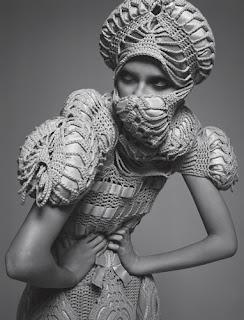 photo peter farago
photo peter farago archive - photo peter farago
archive - photo peter farago perfect hurts - photo andreas kock
perfect hurts - photo andreas kock photo - peter farago
photo - peter farago don't walk collection - photo - denise grunstein
don't walk collection - photo - denise grunstein



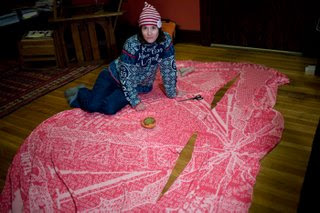

















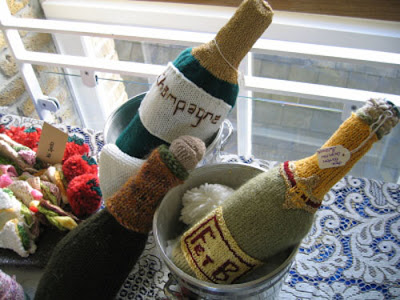


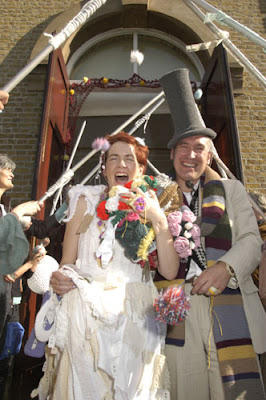














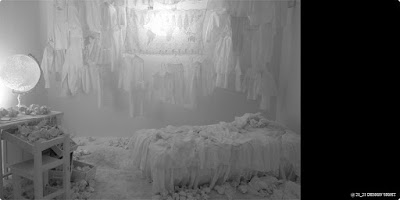

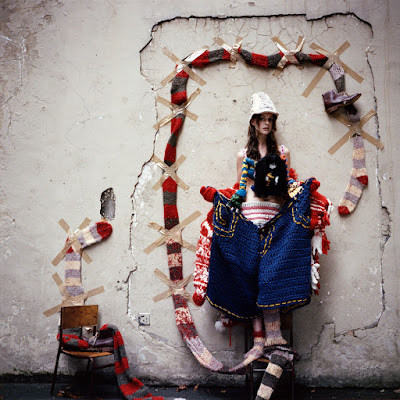



















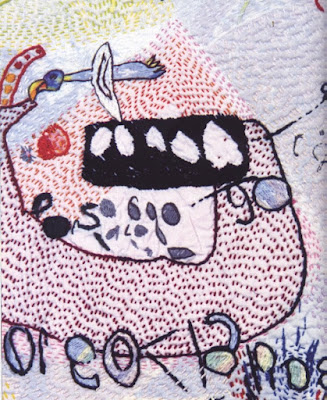

















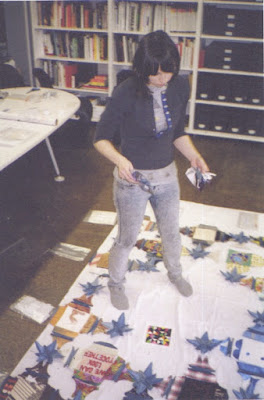
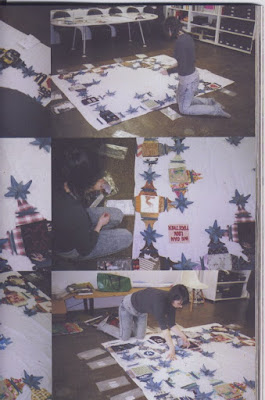
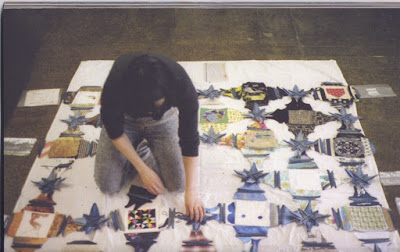
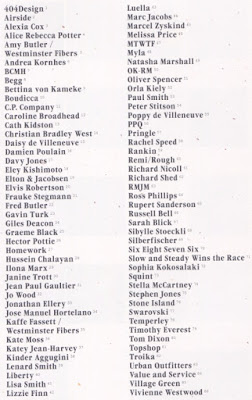




































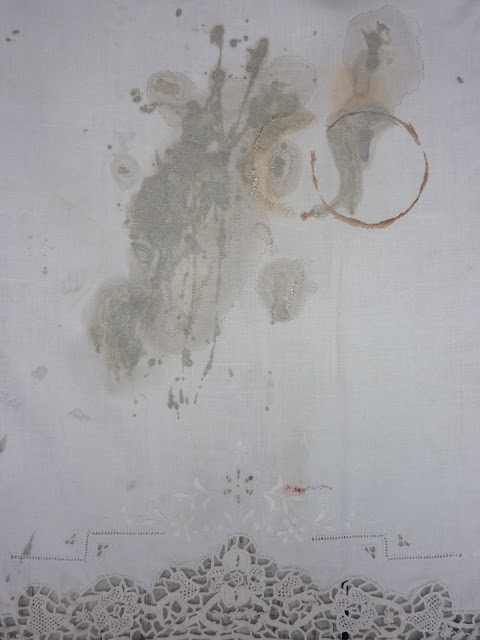

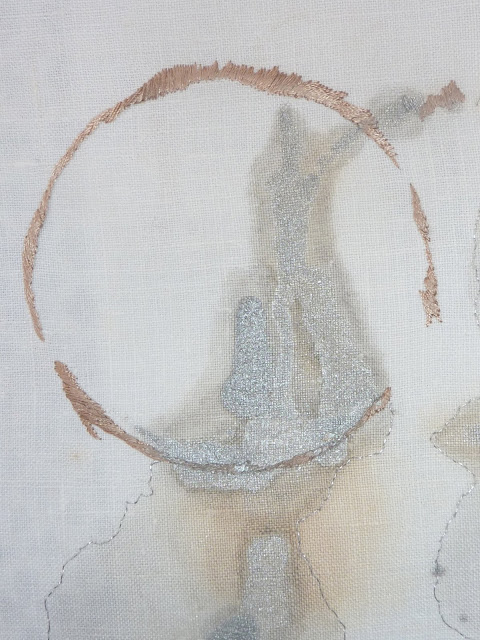


























must come back and read more later!
;o)
And Susan looks so so lovely, I wanna give her a big wooly hug!!
Keep up the great work
KiTTY XXX